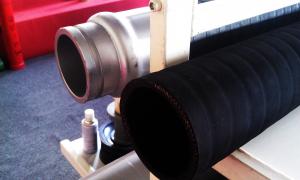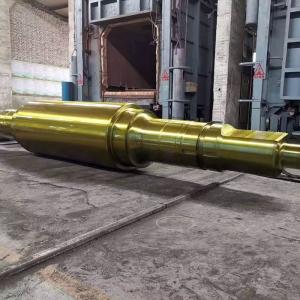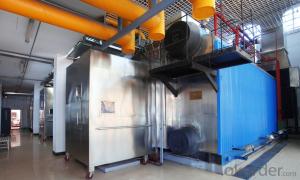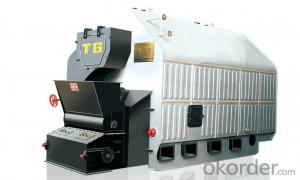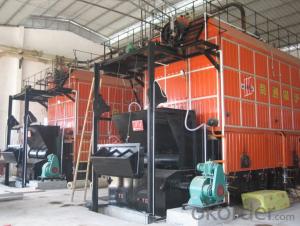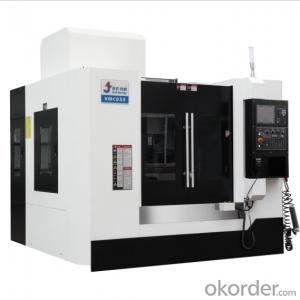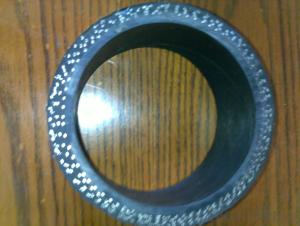Concrete Pump Rubber End Hose
- Loading Port:
- China Main Port
- Payment Terms:
- TT OR LC
- Min Order Qty:
- -
- Supply Capability:
- -
OKorder Service Pledge
Quality Product, Order Online Tracking, Timely Delivery
OKorder Financial Service
Credit Rating, Credit Services, Credit Purchasing
You Might Also Like
Size: 2"-6" (DN50-DN150)
Maximum length: 20 metres
Flange: Schwing, Putzmeister, Sany
Plies of wire or fabric: 2/4
Working pressure: 1200psi
Burst pressure: 3000psi
Other products:
1) Putzmeister/ Schwing/ Zoomlion/ Sermac RamPistons
2) Putzmeister/ IHI/ Kyokuto/ Zoomlion/Sany Seperated Piston
3) Wear-resisting board and Cuts ink
4) Coupling and seal ring for Putzmeister,Schwing, Sany
5) ST52 steel pipe, elbow, reducer
6) Cleaning seriesand other- Q:What are the different types of concrete pump hopper cylinders seals?
- There are several different types of concrete pump hopper cylinder seals, each designed to meet specific needs and requirements. Some of the most common types include: 1. Piston seals: These seals are designed to prevent leakage between the piston and cylinder bore. They are typically made of durable materials such as rubber or polyurethane, and are resistant to abrasion and wear. 2. Rod seals: Rod seals are installed on the piston rod to prevent leakage between the rod and cylinder head. They are often made of materials such as rubber or fabric-reinforced rubber, and provide reliable sealing even under high pressure conditions. 3. Wiper seals: Wiper seals are used to remove dirt, dust, and other contaminants from the piston rod as it retracts into the cylinder. They are typically made of polyurethane or rubber, and are designed to provide effective sealing and protection for the cylinder. 4. Wear rings: Wear rings are used to reduce friction and prevent metal-to-metal contact between the piston and cylinder bore. They are typically made of materials such as bronze or Teflon, and help to extend the lifespan of the cylinder by reducing wear and tear. 5. Backup rings: Backup rings are used in conjunction with other seals to provide additional support and stability. They are typically made of materials such as rubber or PTFE, and help to prevent extrusion and damage to the primary seal. Overall, the selection of the appropriate concrete pump hopper cylinder seal depends on factors such as the specific application, operating conditions, and desired performance characteristics. It is important to choose seals that are compatible with the pumped material, provide effective sealing, and have a long lifespan in order to ensure optimal performance and minimize maintenance requirements.
- Q:Are there any regulatory requirements for the quality and standards of concrete pump spare parts?
- Yes, there are regulatory requirements for the quality and standards of concrete pump spare parts. These requirements ensure that the spare parts meet certain quality and safety standards, and comply with industry regulations. These regulations help to safeguard the performance and integrity of concrete pumps, and ensure that the spare parts used in them are reliable and safe.
- Q:What is the function of a concrete pump control valve?
- The function of a concrete pump control valve is to regulate the flow and pressure of the concrete being pumped, allowing for precise control and efficient delivery of the material to the desired location.
- Q:How do I properly maintain and replace wear plates in concrete pump spare parts?
- Properly maintaining and replacing wear plates in concrete pump spare parts is crucial for the optimal performance and longevity of your equipment. Here are the steps you can follow to ensure that the wear plates are properly maintained and replaced: 1. Regular inspection: It is important to regularly inspect the wear plates in your concrete pump spare parts to identify any signs of wear or damage. Look for cracks, excessive wear, or any other visible signs of deterioration. 2. Cleaning: Before replacing the wear plates, make sure to clean the area around them thoroughly. Remove any debris, dirt, or hardened concrete that might be present. Use a pressure washer or a wire brush to clean the surface properly. 3. Measure wear plate thickness: Measure the thickness of the wear plates using a precision measuring tool. Compare the current thickness with the manufacturer's recommended specifications to determine if replacement is necessary. If the wear plates are below the recommended thickness, it is time to replace them. 4. Remove old wear plates: Carefully remove the old wear plates using appropriate tools. Take note of their positions and any alignment marks to ensure correct installation of the new plates. 5. Prepare new wear plates: Before installing the new wear plates, ensure that they are of the correct size and specifications for your concrete pump. Check for any defects or damage in the new plates before proceeding. 6. Apply lubrication: Apply a thin layer of lubricant or anti-seize compound on the mating surface of the new wear plates. This will help prevent corrosion and ease future replacement. 7. Install the new wear plates: Position the new wear plates in the correct location, aligning them with any reference marks or indicators. Secure them tightly using the appropriate bolts or fasteners, making sure not to overtighten. 8. Test and check alignment: Once the new wear plates are installed, perform a test run of the concrete pump to ensure that everything is functioning properly. Check for any leaks, unusual vibrations, or misalignments. If any issues are detected, address them promptly. 9. Maintain regular maintenance schedule: To prevent premature wear and damage to the wear plates, establish a regular maintenance schedule. This may include cleaning, lubricating, and inspecting the wear plates at specified intervals or after a certain number of hours of operation. By following these steps and maintaining a proactive approach to wear plate maintenance and replacement, you can ensure the smooth operation and prolonged lifespan of your concrete pump spare parts.
- Q:How long does a concrete pump piston typically last?
- A concrete pump piston typically lasts between 20,000 to 60,000 pumping hours, depending on factors such as maintenance, usage, and the quality of the pump.
- Q:How can a faulty water pump affect the concrete pumping operation?
- A faulty water pump can have several negative effects on a concrete pumping operation. Firstly, a water pump is responsible for supplying water that is used to mix the concrete and maintain its proper consistency. If the water pump is faulty and not functioning correctly, it may not be able to supply the required amount of water, resulting in the concrete mix being too dry or not well-mixed. This can lead to a poor-quality concrete mix that is difficult to pump and may not set properly, compromising the structural integrity of the concrete. Additionally, a faulty water pump can affect the efficiency and productivity of the concrete pumping operation. If the pump is not working efficiently, it may take longer to mix and deliver the concrete, causing delays in the construction process. This can lead to increased costs and potential disruptions to project timelines. Furthermore, a faulty water pump can also impact the safety of the concrete pumping operation. Adequate water supply is essential for preventing the concrete from overheating during the pumping process. If the water pump fails to supply enough water, the concrete can heat up rapidly, leading to a phenomenon called thermal cracking. Thermal cracking weakens the concrete and can cause it to fail prematurely, posing a safety risk to workers and the overall structure. In summary, a faulty water pump can negatively impact a concrete pumping operation by resulting in poor-quality concrete mixes, decreased efficiency and productivity, and potential safety hazards. It is crucial to regularly inspect and maintain water pumps to ensure their proper functioning and prevent any detrimental effects on the concrete pumping process.
- Q:How often should concrete pump cylinders be inspected and replaced?
- Concrete pump cylinders should be inspected regularly, ideally on a daily basis, to ensure they are in proper working condition. The frequency of replacement depends on several factors including the intensity of usage, maintenance practices, and the quality of the concrete being pumped. Generally, concrete pump cylinders should be replaced when they show signs of significant wear and tear or when they no longer meet the required performance standards.
- Q:How do I maintain the performance of concrete pump spare parts in extreme weather conditions?
- To ensure the efficiency and longevity of your equipment, it is crucial to maintain the performance of concrete pump spare parts in extreme weather conditions. Consider the following tips: 1. Conduct regular inspections to detect signs of wear and tear early on. Extreme weather can accelerate part deterioration, so staying vigilant is important. 2. Keep spare parts clean to prevent clogging or damage caused by dirt, debris, or contaminants that may accumulate in extreme weather conditions. 3. Use appropriate lubrication for smooth functioning. Opt for lubricants designed for extreme weather, with high viscosity and resistance to temperature fluctuations. 4. Protect spare parts from direct exposure to extreme heat or freezing temperatures by using covers or enclosures. 5. Store spare parts in a dry, temperature-controlled environment when not in use. Extreme weather can cause expansion or contraction, potentially leading to damage. Controlled storage helps maintain integrity and performance. 6. Monitor and replace worn-out parts in a timely manner to maintain performance. Extreme weather conditions can accelerate wear and tear, so proactive replacement is crucial. 7. Consult the manufacturer for specific requirements on maintaining spare parts in extreme weather. They can offer expert advice and guidance for optimal performance. By following these tips, you can effectively preserve the performance of concrete pump spare parts in extreme weather conditions, ensuring smooth and efficient equipment operation.
- Q:How does a concrete pump clamp work?
- An integral part of a concrete pump is the concrete pump clamp, which is utilized to securely fasten and stabilize the concrete delivery pipeline. Its function is to firmly grasp the pipeline, eliminating any potential movement or leakage throughout the concrete pumping procedure. Typically comprised of two primary components, the concrete pump clamp consists of the clamp body and the wedge. The clamp body, constructed from durable steel, possesses a curved structure tailored to the pipeline's shape. Equipped with bolts or knobs, it can be tightened or loosened to attach the clamp to the pipeline. In contrast, the wedge is a metal piece that is inserted into the clamp body. Its purpose is to apply pressure to the pipeline when the clamp is tightened. By manipulating the bolts or knobs, the wedge is pushed deeper into the clamp body, effectively squeezing the pipeline and establishing a secure grip. The secure grip achieved by the concrete pump clamp is essential as it guarantees a seamless and uninterrupted flow of concrete without any leaks or disruptions. It upholds a consistent and steady movement of concrete from the pump to the desired destination. Furthermore, the clamp contributes to the stability of the pipeline, preventing any shifting or displacement during the pumping process. In summary, the concrete pump clamp assumes a crucial role in the efficient and safe operation of a concrete pump. It ensures the secure placement of the concrete delivery pipeline, facilitating a smooth and uninterrupted concrete pumping process.
- Q:What is the function of a concrete pump hopper grate handle?
- The main purpose of a handle on a concrete pump hopper grate is to manually control the opening and closing of the grate. The grate is an essential part of the pump as it allows concrete to enter the pumping system. By using the handle, the operator can adjust the position of the grate in order to control the flow of concrete and prevent any large debris or foreign objects from entering the system. This is crucial for ensuring the smooth operation of the pump and maintaining the quality of the pumped concrete. Additionally, the handle provides easy access to the grate for maintenance and cleaning purposes. Overall, the handle on the concrete pump hopper grate plays a crucial role in regulating the flow of concrete and ensuring the efficiency and reliability of the pumping process.
1. Manufacturer Overview |
|
|---|---|
| Location | |
| Year Established | |
| Annual Output Value | |
| Main Markets | |
| Company Certifications | |
2. Manufacturer Certificates |
|
|---|---|
| a) Certification Name | |
| Range | |
| Reference | |
| Validity Period | |
3. Manufacturer Capability |
|
|---|---|
| a)Trade Capacity | |
| Nearest Port | |
| Export Percentage | |
| No.of Employees in Trade Department | |
| Language Spoken: | |
| b)Factory Information | |
| Factory Size: | |
| No. of Production Lines | |
| Contract Manufacturing | |
| Product Price Range | |
Send your message to us
Concrete Pump Rubber End Hose
- Loading Port:
- China Main Port
- Payment Terms:
- TT OR LC
- Min Order Qty:
- -
- Supply Capability:
- -
OKorder Service Pledge
Quality Product, Order Online Tracking, Timely Delivery
OKorder Financial Service
Credit Rating, Credit Services, Credit Purchasing
Similar products
New products
Hot products
Related keywords
